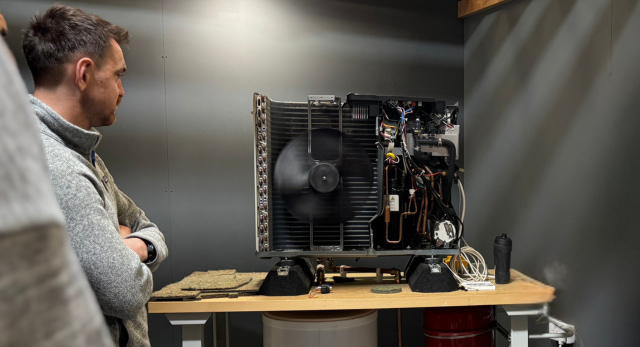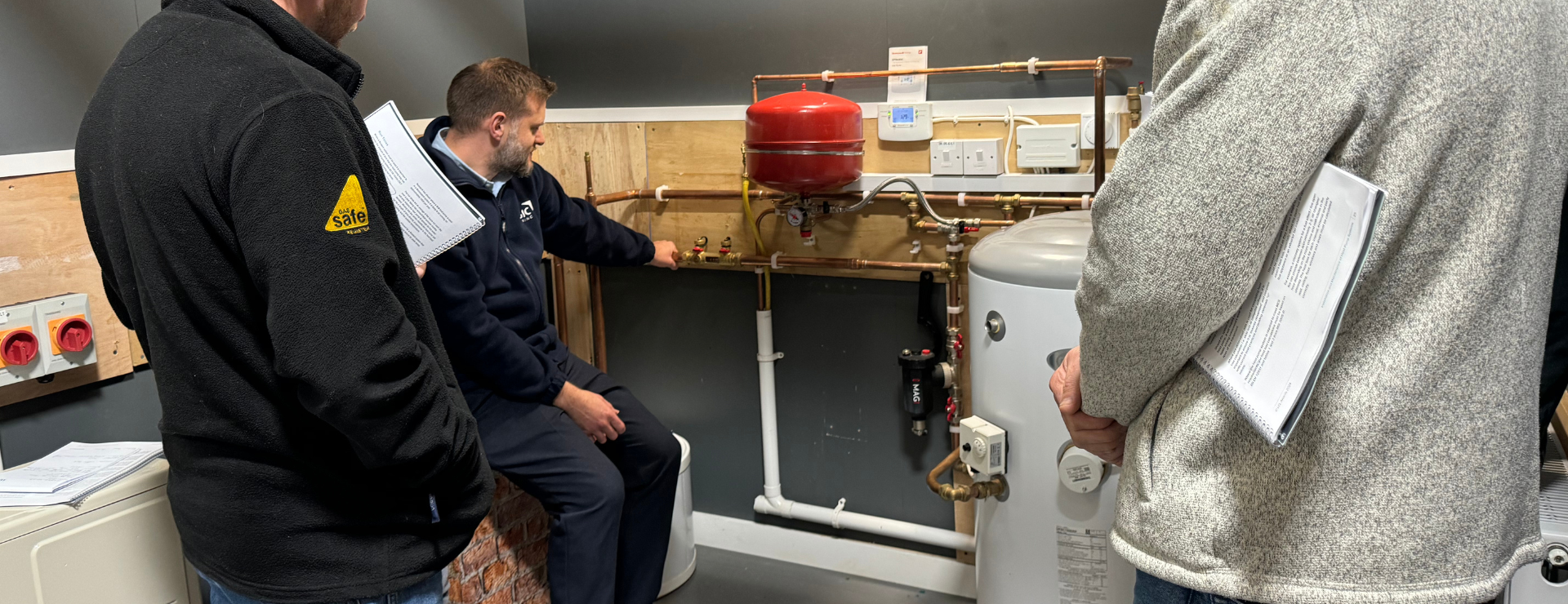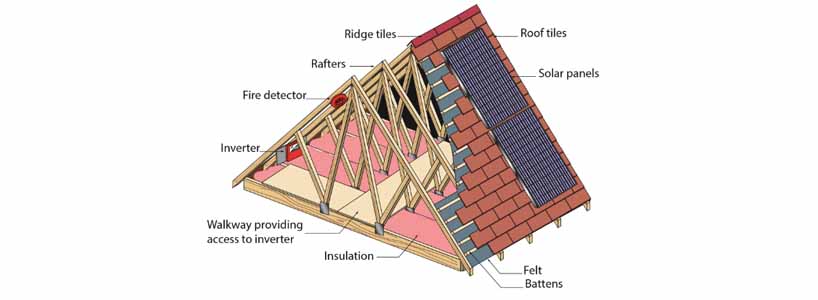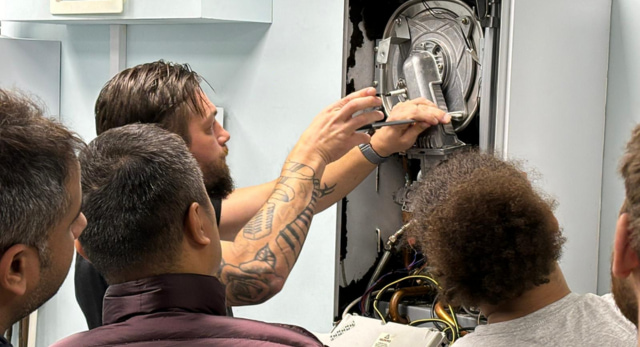The UK government is turning up the heat on its drive for cleaner, greener homes. From 29th May 2025, new legislative changes will make it dramatically easier for homeowners and landlords in England to install air source heat pumps (ASHPs) without planning permission. This bold move, part of the wider Warm Homes Plan, is set to turbocharge the nation’s transition to low-carbon heating and help the government hit its ambitious target of 600,000 annual heat pump installations by 2028.
What’s Changing? The New Permitted Development Rules
From 29th May 2025, the following key changes will apply to air source heat pump installations in England:
- Installation within 1m of the Property Boundary: The old rule, which required air source heat pumps to be at least 1 metre from the boundary, is being scrapped. You can now install a heat pump right up to your property line. Perfect for homes with limited outdoor space.
- Bigger Allowed Unit Size: The maximum permitted volume for an air source heat pump on a dwelling house jumps from 0.6m³ to a generous 1.5m³. That’s more than double the previous limit, opening the door to more powerful systems for larger homes.
- Up to Two Heat Pumps on Detached Homes: Detached houses can now install up to two air source heat pumps under permitted development, supporting cascade systems for greater heating and cooling capacity.
- Inclusion of Air-to-Air Systems (with Cooling): Air-to-air heat pumps that also provide cooling are now included, not just air-to-water systems. This reflects the growing demand for year-round comfort solutions.
- Noise Standards Update: The rules now reference the updated MCS 020 standard, ensuring installations meet the latest requirements for noise and noise assessments. Good news for both homeowners and neighbours.
The Legal Bit
All these changes are formalised in The Town and Country Planning (General Permitted Development) (England) (Amendment) Order 2025.
Why These Changes Matter
1. More Homes Can Go Green
The old 1m boundary rule was a deal-breaker for many properties, especially terraced houses and homes with small gardens. By scrapping this restriction, thousands more households can now consider air source heat pumps with no planning headaches required.
2. Faster, Cheaper Installations
Waiting for planning permission could take months, with some councils taking up to six months to process applications. The new rules slash this red tape, letting installers get to work sooner and saving homeowners time and money.
3. Bigger, Better Systems
The increased size limit means homeowners aren’t forced to compromise on performance. Larger units can deliver more heat (or cooling), making air source heat pumps a practical choice for bigger homes or those with higher energy demands.
4. Flexibility for Detached Homes
Allowing two air source heat pumps on detached properties supports more complex heating and cooling needs. Think large family homes, annexes, or properties with outbuildings.
5. Year-Round Comfort
By including air-to-air systems that provide both heating and cooling, the changes reflect the UK’s evolving climate and the growing demand for all-season comfort.
How Does This Fit with the Warm Homes Plan?
The Warm Homes Plan is the government’s flagship initiative to improve energy efficiency, cut heating costs, and promote cleaner energy across the UK. These planning changes are a cornerstone of the plan, making it simpler for households to ditch fossil fuels and embrace renewable heating.
Homeowners can also take advantage of the Boiler Upgrade Scheme, which offers a £7,500 grant towards the cost of installing an air source heat pump, provided the work is carried out by an MCS-certified installer.
Permitted Development: What Does It Mean?
Permitted development rights allow certain types of work to be carried out without the need for full planning permission. For air source heat pumps, this means:
- No formal planning application required (except in special cases like listed buildings or conservation areas).
- Installations must comply with set limits and conditions (now updated as above).
- Homeowners should still check with their local authority if in doubt, especially for flats, conservation zones, or non-standard properties.
Noise and the Updated MCS 020 Standard
Noise has always been a hot topic for heat pump installations. The legislation now references the latest MCS 020 standard, which covers noise assessments for air source heat pumps. Installers must ensure:
- The system meets strict noise limits at the nearest neighbouring property.
- A noise assessment is completed as part of the installation process.
- Homeowners get peace of mind that their new system won’t upset the neighbours.
Who Benefits Most from the Changes?
- Homeowners with Small Gardens: No more being ruled out by the 1m boundary restriction.
- Landlords and Developers: Faster, easier installations mean less downtime and more energy-efficient properties.
- Installers: Less paperwork, more jobs, and a bigger market to target.
- The Environment: Every new heat pump helps cut carbon emissions and brings the UK closer to net zero.
What About Flats and Non-Detached Homes?
The new rules are most generous for detached houses (up to two units, 1.5m³ each). For other dwellings:
- Non-detached Homes (e.g., terraced, semi-detached): Still limited to one ASHP per property, but the size increase to 1.5m³ applies.
- Blocks of Flats: The size cap remains at 0.6m³ per unit, and only one ASHP per block is permitted under permitted development.
- Special Cases: Listed buildings, conservation areas, and properties with unique restrictions may still require planning consent. Always check with your local authority.
How to Get Ready: Training, Certification, and Compliance
Installer Training and Certification
To install ASHPs under the Boiler Upgrade Scheme and ensure compliance with the latest standards, installers must be MCS-certified. Logic4training offers the LCL Awards Level 3 Award in the Installation and Maintenance of Air Source Heat Pump Systems. This course covers:
- System design and sizing
- Installation and commissioning
- Routine maintenance
- Compliance with MCS 020 and other regulations
For those looking to learn about renewables, specifically air source heat pumps, you will need to currently hold:
- A valid WRAS Water Regulations qualification in addition to one of the following:
- A Level 2 or Level 3 NVQ or SVQ in plumbing/heating & ventilation/gas/oil – Installation and Maintenance qualification
- A valid Core Gas Safety (CCN1) certificate with CENWAT – must be involved in the installation of heating systems
- An OFTEC Oil certificate
- A valid HETAS certificate (must be for wet systems)
- CPS registration for plumbing systems
- Two years minimum of verifiable experience on the installation of heating and hot water systems.
Noise Assessments and MCS 020
Logic4training’s courses also cover the practicalities of noise assessments under MCS 020, ensuring your installations meet all legal requirements and keep neighbours happy.
Ready to upskill?
Check out Logic4training’s Air Source Heat Pump Training and make sure you’re at the forefront of the UK’s heating revolution.
For the official legislative details, see The Town and Country Planning (General Permitted Development) (England) (Amendment) Order 2025. For more on the Warm Homes Plan, visit the government’s summary.
FAQs
Do I still need planning permission for an air source heat pump after May 2025?
In most cases, no. The new rules mean you can install an ASHP within 1m of your property boundary and up to 1.5m³ in size (or two units for detached homes) without planning permission. Exceptions apply for listed buildings, conservation areas, and flats.
Can I install more than one heat pump on my property?
If you live in a detached house, you can now install up to two ASHPs under permitted development. Other property types are limited to one unit.
What’s the maximum size of an ASHP I can install without planning permission?
For houses, the limit will 1.5m³ per unit from the 29th of May. For flats, the limit remains at 0.6m³.
Are air-to-air systems that provide cooling now included?
Yes, air-to-air heat pumps that also offer cooling are now covered by permitted development rights, as long as they’re not solely for cooling.
What noise standards do I need to meet?
Installations must comply with the updated MCS 020 standard, which sets strict noise limits and requires a formal noise assessment as part of the installation process.











